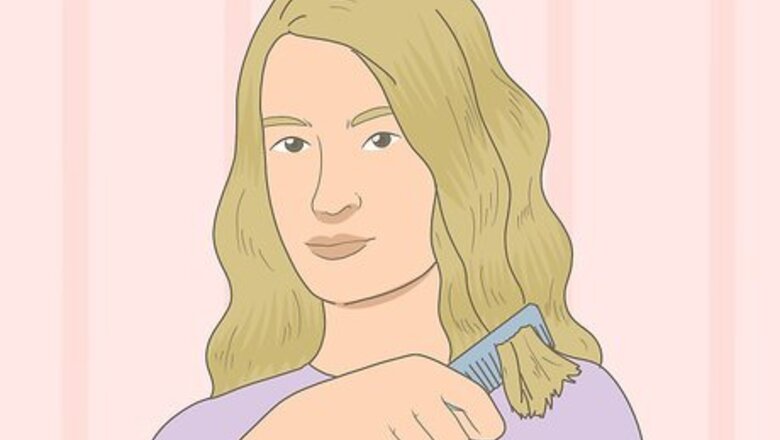
views
Trimming the Ends
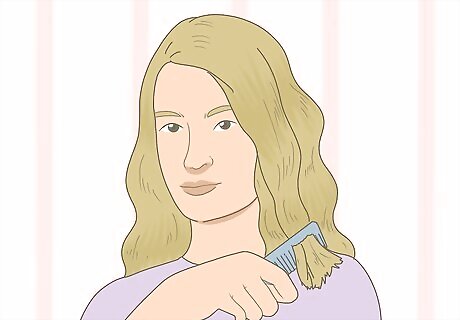
Brush out your dry hair thoroughly. You don’t need to dampen your hair for this super simple technique, but it's fine to spray a little detangler on your hair if it's difficult to brush out or knots up easily. Run a comb or paddle brush from root to tip until your wavy hair is smooth and tangle-free. Using detangler is okay, but your hair needs to be clean and otherwise product-free. This technique works for chin-length or longer hairstyles. If you're cutting wavy hair into a short or pixie style for the first time, you may want to have a stylist do the initial cut. Then, you can try keeping up with maintenance trims at home!
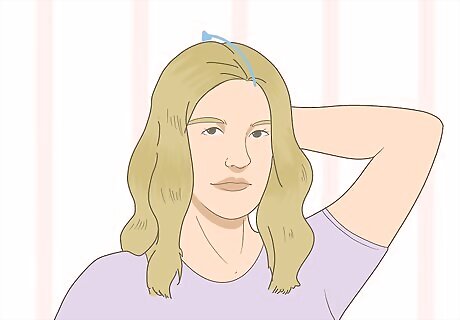
Part your hair down the middle with a comb. Place the tip of a comb at the center of your front hairline. Drag the comb to the nape of your neck to create the center part. Brush or comb down the hair on each side of the part so that you have 2 smooth, even sections of hair. It's best to part your hair down the center when you're doing a simple, one-length trim, even if you normally style your hair in a side part. This helps prevent uneven sides.
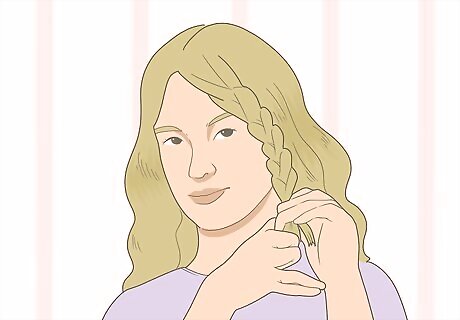
Grab a section of hair and braid or twist it. Separate a 1–2 in (2.5–5.1 cm) section of hair with your fingers, starting on 1 side of your head. Braid or twist the section of hair almost all the way to the end until you get to where you want to take off length. A good trim usually takes off ⁄4–⁄2 inch (0.64–1.27 cm) of lengths. The smaller and tighter you make the braids or twists, the more precise your trim will be.
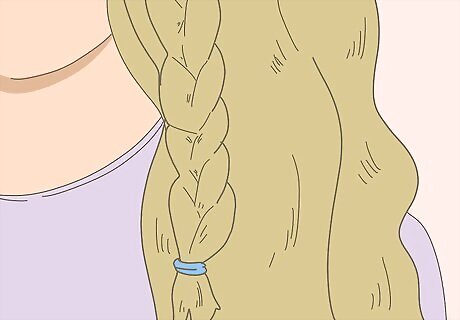
Wrap a hair elastic at the end of the braid to mark the spot. You will be using the hair elastic as a guide for removing the length, so place it appropriately based on how much hair you want to take off the ends.
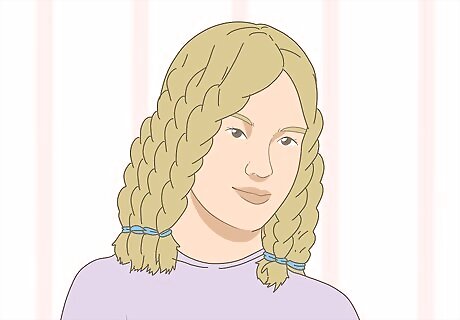
Braid and twist the remaining sections of hair the same way. Continue the same process for the remaining sections of hair, working systematically to the other side. Be sure to wrap the elastic at the same length for each braid or twist. If you need to, use the previous braid as a point of comparison. Be consistent and do all braid or all twists.
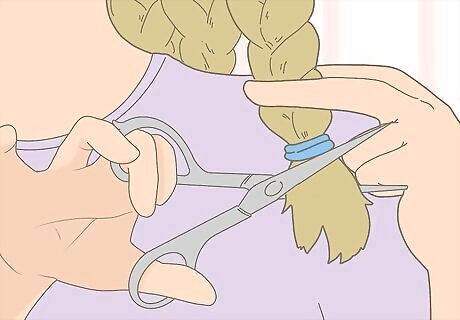
Cut straight across the end of each braid or twist beneath the elastic. Pick up the first braid or twist and make a straight snip across the bottom, directly below the hair elastic. Start on 1 side of your head and work systematically to the other side so you don't accidentally skip or miss any braids. Don't use regular scissors or kitchen shears for this! It's best to use stylist shears, which you can pick up at most drug and big-box stores. Also, avoid using thinning shears or razors on your hair—these tends to make wavy hair frizzy.
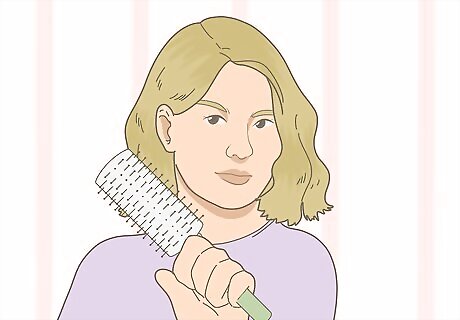
Remove the elastics and brush out your hair. After trimming the end of each braid or twist, pull off the hair elastic. Continue this process for each braid until you’ve finished cutting all of your hair. Then, undo your braids, brush out your hair, and check out your results!
Sectioning Hair for Face-Framing Layers
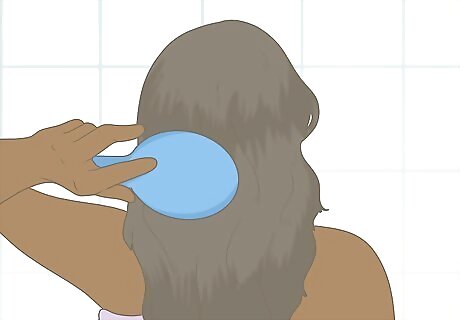
Comb out your dampened hair to remove any tangles. Towel-dry your freshly washed hair or spray your hair with a little water to dampen it. Then, run a paddle brush or wide-tooth comb through all of your hair from root to tip to get rid of any knots or tangles. Try applying a detangling spray if your wavy hair is thick or tends to tangle a lot. This technique works best for medium and long hair. The process is similar if you want to cut a layered bob, but there are a few key differences.
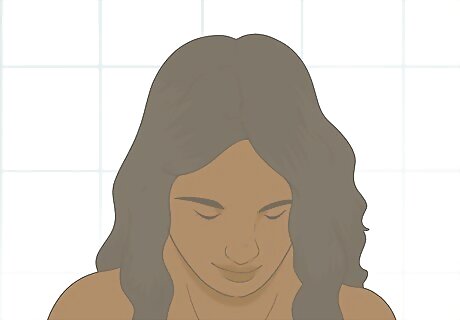
Run the tip of a comb from forehead to nape to create a middle part. Identify the center of your front hairline and position the tip of a comb against your scalp. Pull the comb through the crown and all the way down to the nape of your neck. Comb the sectioned hair down on each side to smooth the hair and complete your center part. Be sure to smooth the hair down on both sides so your layers will be even. Parting your hair in the center before cutting layers offers the most styling flexibility. However, if you always style your hair the same way, you can comb your hair into your usual side part before cutting layers.
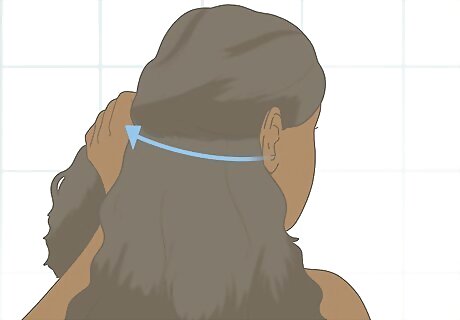
Part the hair from ear to ear to create a third section in the back. Place the tip of the comb against your scalp next to the top of your left ear. Run the comb through the hair to the top of your right ear to section off the back part. Comb this section straight out in the back. At this point, you should have 3 sections: a top left section, top right section, and back section. The back section starts at the crown and includes all of the hair beyond the crown.
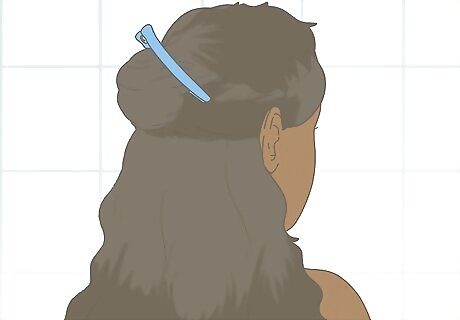
Divide the back section in half horizontally and clip the top section up. Drag the comb from the lobe of 1 ear over to the lobe of your other ear to create a top section and a bottom section of hair. Twist the top section and clip it out of the way with a plastic hair clip. You don’t have to do this if your hair is thin, but it's generally a good idea so you aren’t working with too much hair at a time.
Creating Face-Framing Layers
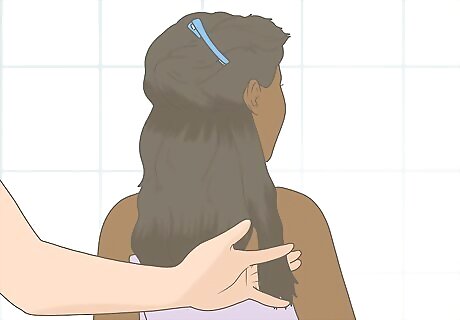
Comb the loose back section of hair and pull it taut between your fingers. Quickly run the comb through the hair once more. Place the hair in between your index finger and middle finger on your non-dominant hand. Bring your fingers down the length of the hair and stop 1–2 inches (2.5–5.1 cm) from the ends. The exact amount of length you cut off is up to you, but a good trim usually takes about 1 inch (2.5 cm) off. Err on the side of caution if you aren’t sure! You can always cut more hair off later.
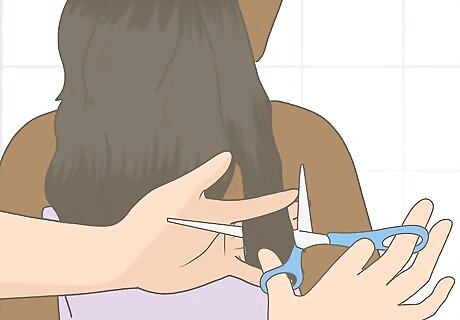
Cut straight across the hair under your fingers to remove the ends. Hold the scissors in your dominant hand and cut across the hair from right to left if you’re right-handed or left to right if you’re left-handed. Use your fingers as a guide and snip off 1–2 in (2.5–5.1 cm) of length. If the hair if very thick, you may need to grab small sections at a time and work your way from 1 side to the other.
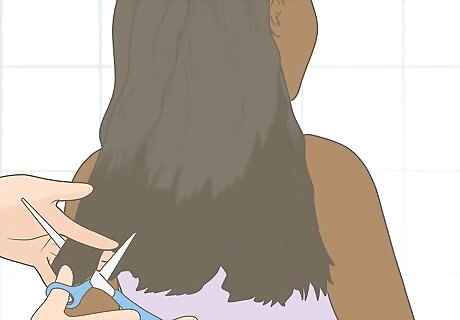
Unclip the top section of hair and repeat the process for all sections. Remove the plastic hair clip and comb out the top layer of hair. Sandwich the hair in your fingers and bring them to the ends until the hair is taut. Use the first section as a guide to cut off the same amount of length. Use the same process to remove length from the left and right sections. Be sure to make blunt cuts straight across the hair.
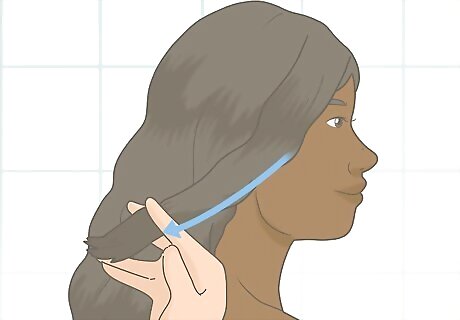
Pull the hair on the right or left side of your head with your fingers. Grab the section of hair from your hairline to your ear on whichever side you’d like to start on. Sandwich the hair in between the pointer and middle fingers and bring them down until they’re a few inches from the end. Remember to pull the hair taut.
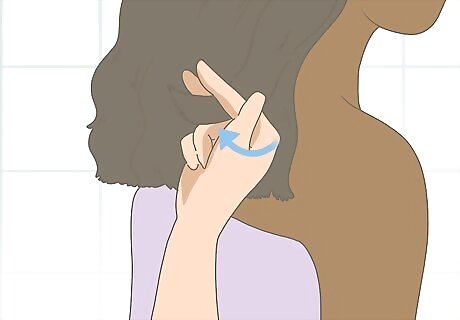
Angle your fingers up and cut under them to create the layer. If you aren’t sure about the length, start about 1 inch (2.5 cm) above the current length for the first layer. Angle the fingers holding the hair up slightly. Angle the scissors down and cut across the hair, using your angled fingers as a guide.
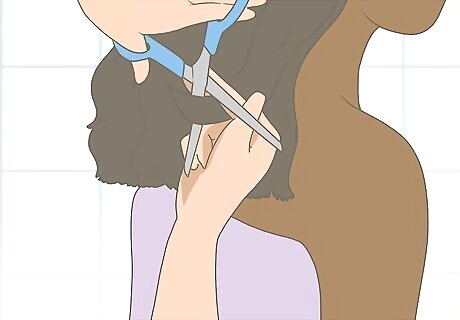
Cut the layer on the other side of your face the same way. Repeat the process of angling the fingers and cutting along beneath them to create the first layer. To make sure the layers on both sides are perfectly even, place the comb horizontally in the center of your hairline and comb down to bring hair from each side to the middle. Then, compare the lengths of the pieces on each side of your nose. Make any minor tweaks, as necessary, until the both layers are even.










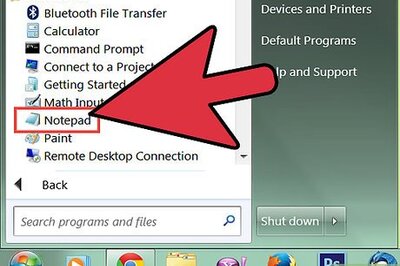




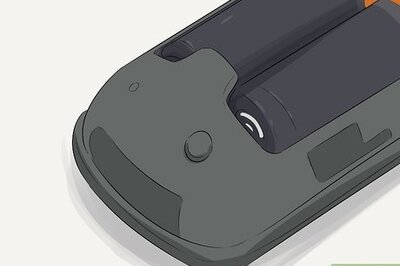
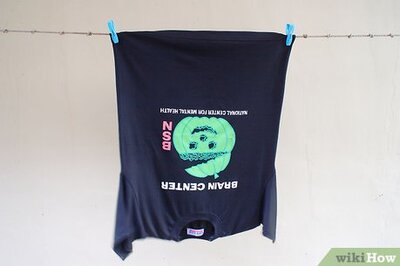


Comments
0 comment